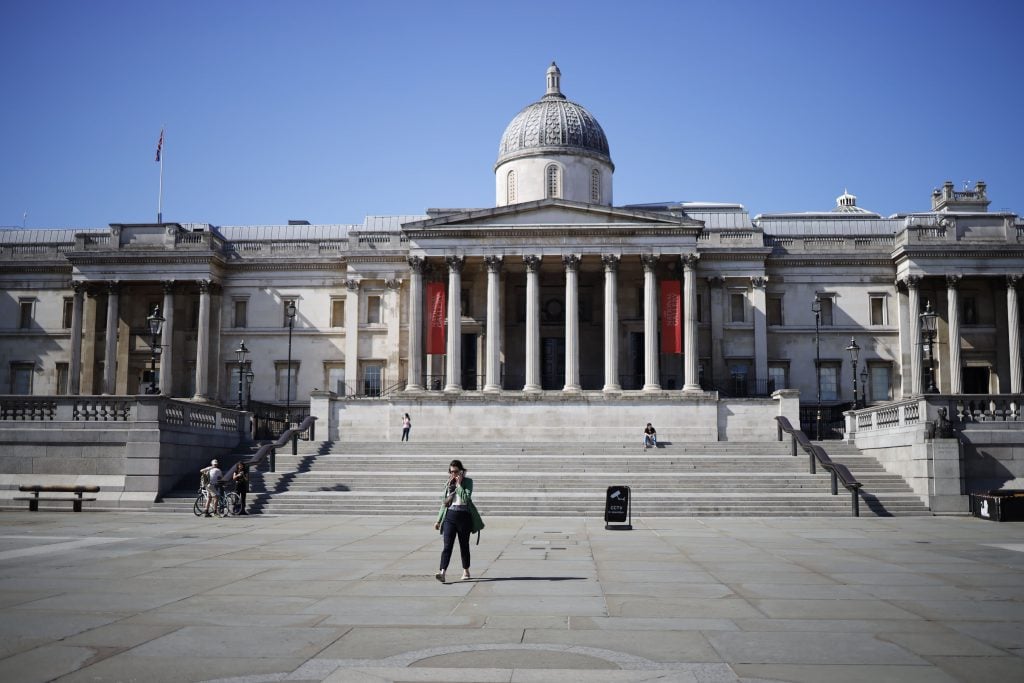Museums & Institutions
London’s National Gallery Is Exploring Its Collection’s Links to Slavery—and Will Investigate Trustees and Donors Next
The institution seeks to explore the history of its collection in four stages.

The institution seeks to explore the history of its collection in four stages.

Amah-Rose Abrams

London’s National Gallery has published the first stages of an investigation into its collection’s historical ties to slavery.
Covering links to slavery and abolition through family, marriage, or their own actions, the report looks into key figures involved in growing the collection including through bequests and donations, and at completion will span the years 1640 to 1920, with later sections particularly focused on investigating trustees and donors.
The development is part of a growing effort among U.K. institutions to be more transparent about their nuanced histories; efforts which have incited both praise and criticism from the public.
The ongoing research project by the National Gallery and Legacies of British Slave-Ownership in collaboration with the Centre for the Study of the Legacies of British Slavery (LBS) at University College London (UCL) is bringing together information about the institution’s relationship with slavery throughout its history.
“We acknowledge that our collection has a particular, historically rooted character and that we need to tell a broader story,” a spokesperson for the National Gallery told Artnet News of the project.
You can click through the initial list online, which covers 1824 to 1880, to look at works and find out about how, and through whom, they came into the collection. It also includes works “formerly belonging to, commissioned by, or depicting a slave-owner.”
The research project began in 2018 when the institution established an academic partnership with the founder and then director of LBS, Nicholas Draper to “undertake systematic research into key figures in our history.”
“LBS’s resources have clarified many links between slave-ownership, art collecting, patronage and philanthropy in Britain,” the institution said. According to the website, the first person they looked into was John Julius Angerstein, who sold 38 works to the national collection in 1824 after making his money by underwriting and brokering marine insurance partially for the transportation of enslaved people and produce. He also acted as a trustee for estates with ties to enslaved people in Grenada and Antigua.
The National Gallery was founded in 1824 but the U.K. national art collection it houses dates back much further. Stage III of the project will cover trustees and donors from 1880 to 1920 and stage IV will look at picture owners dating back as far as 1640. To expand on this research the National Gallery is also sponsoring a collaborative doctoral PhD with Birkbeck College, University of London, on “the National Gallery in the ‘Centre of Empire,’ 1824–1924,” which started in 2021 and is supervised by Susanna Avery-Quash of the National Gallery and Sarah Thomas of Birkbeck.
“We are one of many U.K. museums and historic collections that are working to make the history and origin of their collections more accessible and transparent,” the institution said.
Some of these projects have sparked debate among the public. Earlier this year, the U.K.’s central heritage body, the National Trust, published a controversial dossier outlining the links between some of its historical properties and the trade in enslaved people. The publication ignited a firestorm among members of the organization and the public, with some members of parliament even weighing in to criticize the institution for its “woke agenda,” and its chair Tim Parker subsequently stepped down from his post.
There has already been a degree of backlash against the National Gallery’s decision among some more conservative factions of British media, with the Telegraph calling the list a “hall of shame” and the Times stating that it has “cast the stigma of slavery upon hundreds of paintings” in its collection.
Regarding possibly facing backlash for its decision, a spokesperson for the National Gallery told Artnet News that it was prepared to weather the storm. “Facing these histories honestly may be difficult, but we are seeking ways to acknowledge their significance in more direct and explicit ways, through research, interpretation, and debate,” they said.